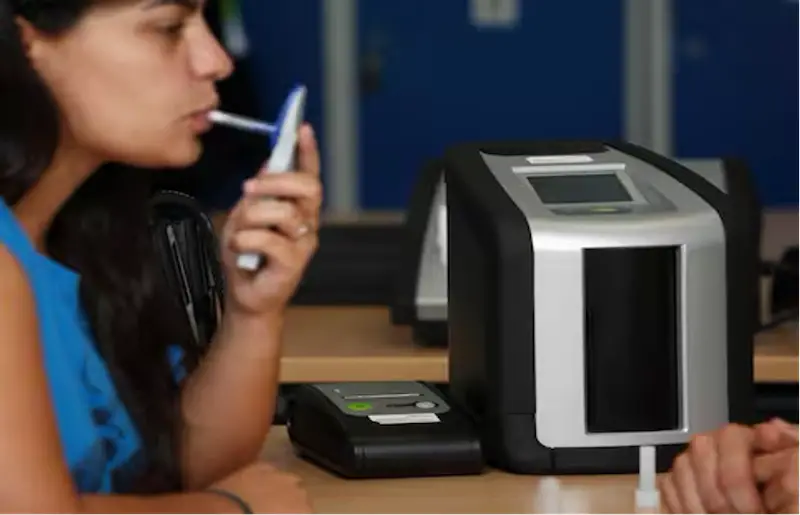How to Implement Workplace Drug and Alcohol Testing Protocols

The presence of drug and alcohol abuse in the workplace presents a complex challenge for employers across different sectors. It's a concern that goes beyond safety risks, affecting productivity, attendance, and raising a myriad of legal and ethical questions.
To combat those issues, organizations often adopt drug and alcohol testing as a cornerstone of their workplace policies. In this blog post, we’ll highlight key steps and considerations for successfully integrating drug and alcohol testing protocols in the work environment.
But first, let’s understand why you need drug and alcohol testing protocols in the workplace to begin with. Then, we’ll discuss steps on how you can navigate the transition of establishing a drug and alcohol testing policy up to its effective implementation in the work environment.
Understanding the Need for Drug and Alcohol Testing

Drug and alcohol testing is essential. At the heart of drug and alcohol testing policies lies the unwavering commitment to safety. The presence of impaired individuals in the workplace – such as in sectors involving heavy machinery or transportation, for example – is a recipe for disaster.
Such impairment endangers not just the individual, but also their colleagues and, in some cases, customers. By implementing testing protocols, organizations can significantly mitigate those risks, fostering a safer work environment for everyone.
The ripple effects of substance abuse in the workplace extend to decreased productivity, increased absenteeism, and a higher incidence of workplace accidents. These factors collectively pose a substantial financial burden on any company.
Through drug and alcohol testing, organizations can address all of those challenges head-on, maintaining a productive, efficient, and economically viable work environment.
Elements of a Drug and Alcohol Testing Policy
When crafting a comprehensive drug and alcohol testing policy, key elements of an effective drug testing policy to include are:
- Definitions: Clearly define key terms related to drug and alcohol use, such as "reasonable suspicion," "random testing," and "zero-tolerance."
- Scope: Specify the scope of the policy, including who it applies to, whether it covers job applicants, current employees, or both.
- Testing Procedures: Detail the procedures for testing, including the type of tests to be used (e.g., urine, saliva, or breathalyzer), the frequency of testing, and the specific circumstances triggering a test.
- Consequences: Outline the consequences for a positive test result, which may include disciplinary actions, rehabilitation programs, or termination.
- Confidentiality: Address how test results will be handled and stored to ensure privacy and compliance with data protection laws.
Strategies for Communicating a Drug and Alcohol Testing Policy
A well-crafted drug and alcohol testing policy is only effective if employees are aware of it. As such, effective communication is key to ensuring that all employees understand the organization's expectations and the reasons behind the drug testing policy.
Some effective methods for communicating your drug and alcohol testing policy include:
- Training: Conduct training sessions to educate employees about the policy, including its purpose, procedures, and consequences.
- Written Materials: Provide employees with written materials that summarize the policy and their rights and responsibilities.
- Open Dialogue: Encourage open communication by creating a safe space for employees to ask questions and voice concerns.
- Regular Updates: Keep employees informed of any changes or updates to the policy.
Top Tips and Considerations for Implementing Testing Protocols

Some key considerations and tips for successful implementation of drug testing protocols include:
- Choosing the Right Testing Methods: Select appropriate testing methods based on the organization's needs and budget. Common methods include urine tests, saliva tests, and breathalyzer tests.
- Ensuring Accuracy: Partner with reputable testing labs or providers to ensure accurate and reliable results. Regularly calibrate testing equipment to maintain accuracy.
- Handling Confidentiality: Maintain strict confidentiality when collecting and handling samples. Only authorized personnel should have access to test results.
- Addressing False Positives: Recognize that false positives can occur, and have a process in place for retesting and confirming positive results to avoid unjust consequences.
Best Practices for Handling Drug Testing Positive Results
When a positive drug test result occurs, it's essential to handle the situation with sensitivity and fairness. This is a critical juncture where the drug testing policy's consequences come into play.
Some key tips and best practices on how to handle positive results effectively include:
- Follow Established Procedures: Adhere to the procedures outlined in the policy, which may include disciplinary actions, rehabilitation options, or further testing.
- Maintain Confidentiality: Respect the privacy of the individual involved and ensure that only those with a legitimate need to know are informed of the result.
- Offer Support: If your organization offers rehabilitation or employee assistance programs, provide information and support to the affected individual.
- Ensure Due Process: Ensure that the employee has the opportunity to explain or contest the positive result and that the organization follows due process.
Ensure Continuous Monitoring and Improvement
Implementing drug and alcohol testing protocols is not a one-time effort; it requires continuous monitoring and improvement for success.
Some strategies for continuous monitoring and improvement to ensure ongoing success include:
- Regular Audits: Conduct regular audits of your testing program to ensure compliance with the policy and legal requirements.
- Employee Feedback: Seek feedback from employees to identify areas for improvement and address any concerns or issues.
- Stay Informed: Keep abreast of changes in drug testing technology, legal requirements, and best practices to ensure your program remains effective.
- Adapt and Evolve: Be willing to adapt your policy and procedures as needed to address emerging challenges and changing circumstances.
Conclusion
Implementing successful drug and alcohol testing protocols in the workplace is a multifaceted process that requires careful planning, communication, and ongoing monitoring.
By crafting a comprehensive policy, effectively communicating it to employees, implementing testing protocols with accuracy and fairness, and continuously monitoring and improving the program, organizations can create safer, more productive, and more responsible work environments.
Remember, a well-executed testing program not only protects employees, but also upholds an organization's reputation as a responsible corporate citizen.
























